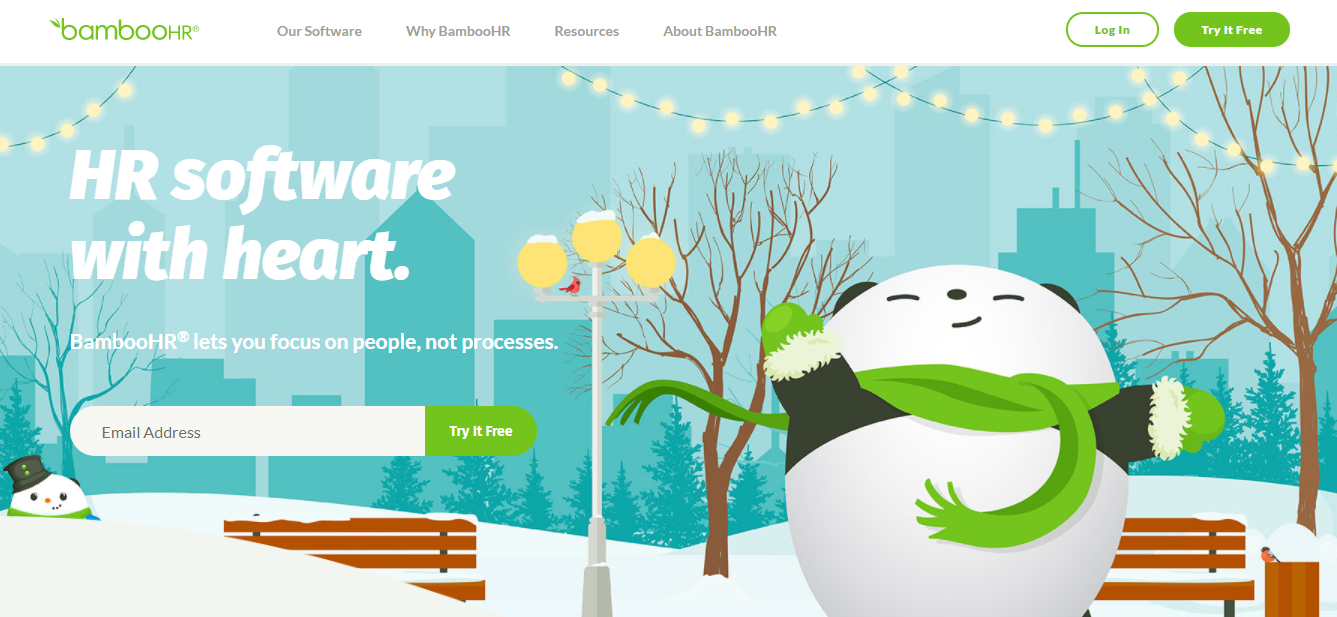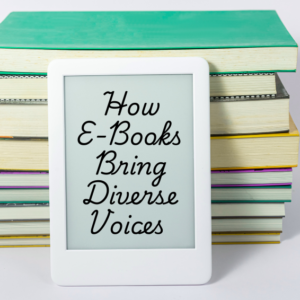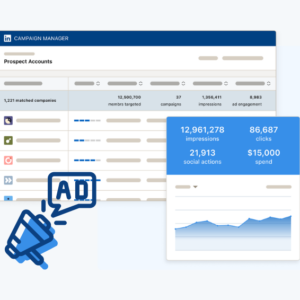The event handler is simple and easy to implement in Laravel development. The Laravel event is the perfect way to reduce many aspects of your app.
Laravel, a web app framework with elegant, expressive syntax lets you create app development without a sweat. It’s one of the best open-source frameworks of PHP and is used for fast and easy website development. To build good quality web apps and websites, there are several available development services available, but one of the favorites is Laravel app development services.
Laravel web development has immense relevance in web apps development using the MVC or the Model-View-Controller architectural pattern. Thus, the framework has allowed the development of personalized, superior web apps for companies all over the world. The coding experience, due to its simplicity leads to a flawless syntax, with the least extent of being wrong.
What exactly are Laravel Events?
The Events in Laravel
The events in Laravel provide seamless observer implementation, enabling you to subscribe and to listen to the different events that happen in your app. Event classes are stored typically in the app/Events directory, and on the other hand, listeners are stored in Listeners/app. No worries if you don’t see the directories in your app, because they will be made for you when you generate events and listeners with the Artisan console commands.
Moreover, Events serve as a wonderful way of decoupling the different aspects of your app, because one event could have many listeners that don’t depend on one another. Let’s say for instance every time you ship an order you may want to send your user a Slack notification.
Rather than decoupling the order processing code to the Slack notification code, an OrderShipped event could be raised that a listener could get and transform. The Events facilities provide streamlined observer implementation, letting you subscribe and listen for app events. Events are great in separating the different aspects of your app.
Laravel Events Examples
- new user register on the website
- a user creates a blog post
- a comment is added to a blog
- a user likes or dislikes pictures and so on
The Implementation of the Laravel Event Handler
Events and Listeners—Registration
To register, you have to open the app/Providers/EventServiceProvider.php. The protected listen property could be found in the EventServiceProvider class. Check out the code below.

The Listen array has a list of listeners and events, and you could add as many events as your app needs. Let us for example, add a User Registered event:

We’ve made the UserRegistered event for it to trigger when a user is registered. On a newly registered user, should you want to call some action, you could call as many actions as you like. We have defined here a couple of actions; one is SendActivationCode, and another is AssignRole.
Events and Listeners Generation
To generate files for events and listeners manually is painstaking. Rather, you could add listeners and events to the EventServiceProvider, then run the event:generate command.
php artisan event:generate
The command will generate any listeners and events in your EventServiceProvider list. Already existing events and listeners won’t be touched.
Events Definition
Defined as a data object, the event class holds information that is related to the event. For instance, please see the created event class below. UserRegistered event gets an Eloquent ORM object.
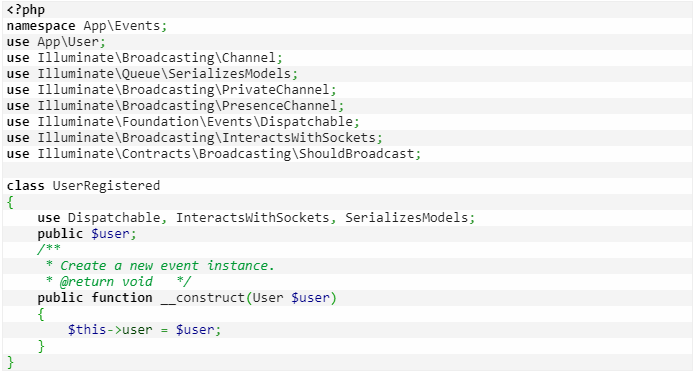
As you see, the event class doesn’t have any logic. SerializesModels trait would be used in the event will serialize Eloquent models if an event object is serialized with the serialize function of PHP. We pass $user object to construct, and the object would be assigned to $user variable into that class.
Listeners Definition
For our example event, let’s talk about listeners. In the handler method, it’s the event object recipient. The artisan of PHP automatically makes:listener command will create the right class and type-hint the event on a handle method. Here, we create a couple of listeners for a UserRegistered event. We wish to send an activation code to a user and assign a role to the user as well. See below.
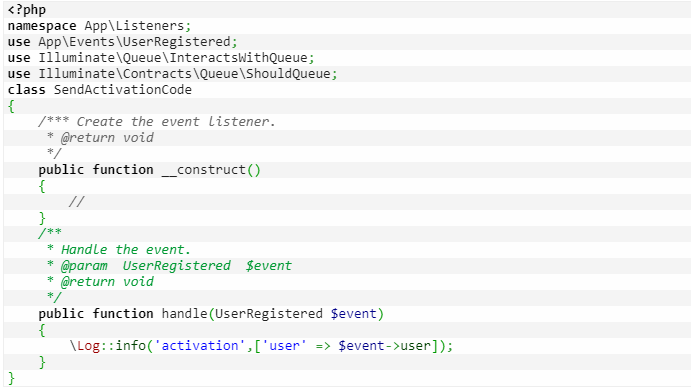
We passed a $user object containing user data that are newly registered to help send an activation code and assign a role. We have no Log code when an event is called. Presently, we have a written Log code when even is called, so you could write your code as per the type of event.
How to Stop an Event Action
If you wish, you can stop the event action to other listeners. By returning false from listeners, you’ll be able to do so.
Why Opt for Event-Driven Laravel Apps?
First and foremost, as mentioned earlier, the Events server is a terrific way of decoupling the different aspects of your app, because one event could handle several listeners that don’t depend on one another. Through decoupling, you do not pollute the code base with code that does not fit the domain logic necessarily. Second, since the app is loosely coupled, you could extend its functionality easily without rewriting and/or breaking the app or at least a few of its other functionalities.
Benefits of Laravel
For your brand, a Laravel development company could help you craft a solution that best fits your requirements. With the framework, you reap the many benefits that it provides. Check out the top ones.
Embracing the current features of PHP
One distinct benefit that developers could derive from the framework is the fact that it integrates all the current PHP features. You get to use some of the best current PHP offerings if you want to give Laravel a try. Features, such as overloading, namespaces, interfaces, anonymous functionalities, and shorter syntax range.
With the current version introduction, developers of the PHP framework would be able to use the Zttp Guzzle Wrapper package as well.
Quicker development time.
A great selling point for most web apps and website developers. With Laravel, you could significantly minimize the whole development cycle because integrations are much quicker, and, should you get stuck, the big user community is around to assist you.
Shortening the entire development phase could save both money and time, and lets developers become more productive, which from a material viewpoint, could be lucrative.
Mail Service integration
Great web apps keep users updated in terms of the latest offers and deals, together with registering new users immediately. With the framework, you could use drivers for Mailgun, SMTP, Amazon SES, Mandrill, SparkPost, and Sendmail, which allows sending emails via cloud-based, or local services.
Significant documentation
Every framework version was released with the right documentation, which features easy to understand and detailed description in terms of approaches, classes, and types of code. Such documentation that’s detail-oriented is what makes Laravel truly developer-friendly.
Reverse routing
Another very useful feature. It lets you build structure links into named routes. All it takes is to use the specific router’s name when building links and the system automatically inserts the URL requested. Moreover, if you’re in the position of changing routes, you should know that changes automatically would be made anywhere.
Abundance of resources and packages
You can use the npm and bower packages with Laravel if you opt to incorporate the framework with Gulp or Elixir. This is particularly handy in the asset and resource revisions process. Integration of it with the composer resolves dependency concerns.
An Eloquent Object Relational Mapping
Smooth ActiveRecord implementation is possible with an eloquent object-relational mapping or ORM to work with the database. Putting it another way, the feature allows creating models with a corresponding database table. ORM hosts built-relationships, which means that you could change the table, and then the related data would change as well.
The following relationships could be used:
- one-to-one
- one-to-many
- many-to-many
- polymorphic relationships
- many, has, though,
- many-to-many polymorphic relationships
This could be one of the best Laravel features, providing a seamless ActiveRecord execution when working with databases.
Authentication, automatic testing, configuring error and exception handling
With Laravel, authentication is an out-of-the-box, easy feature, and authorization logic organization and control access to resources are simple as well. Testing is a breeze because PHPUnit testing support comes with the framework, together with the already set up dedicated file. Other principles and methods included help with providing expressive testing not only with seamless troubleshooting options but basic user simulations as well, such as form filling and link clicking.
Management of Queue
Remove tasks that are not necessary or relevant anymore, and put them in a queue for a shorter user response time.
MVC or the Model-View-Controller
Being a model-view-controller framework, it means that Laravel developers don’t have to use the old writing of the entire PHP and PHP codes method in the same files.
Conclusion
We have a better understanding of the Events in Laravel and how to implement it in the development process. We have also checked out the possible advantages that could be derived from event-driven apps.
In the ecosystem of PHP, the Laravel framework is without a doubt a dominant framework because it offers a huge number of outstanding features that enable developers to create fast, user-friendly, and functional web apps. With an elegant and sleek structure, as well as its exquisite syntax, it could hasten the development cycle and easily integrates with mail services, with wonderful documentation and supports the biggest features of PHP as well.



